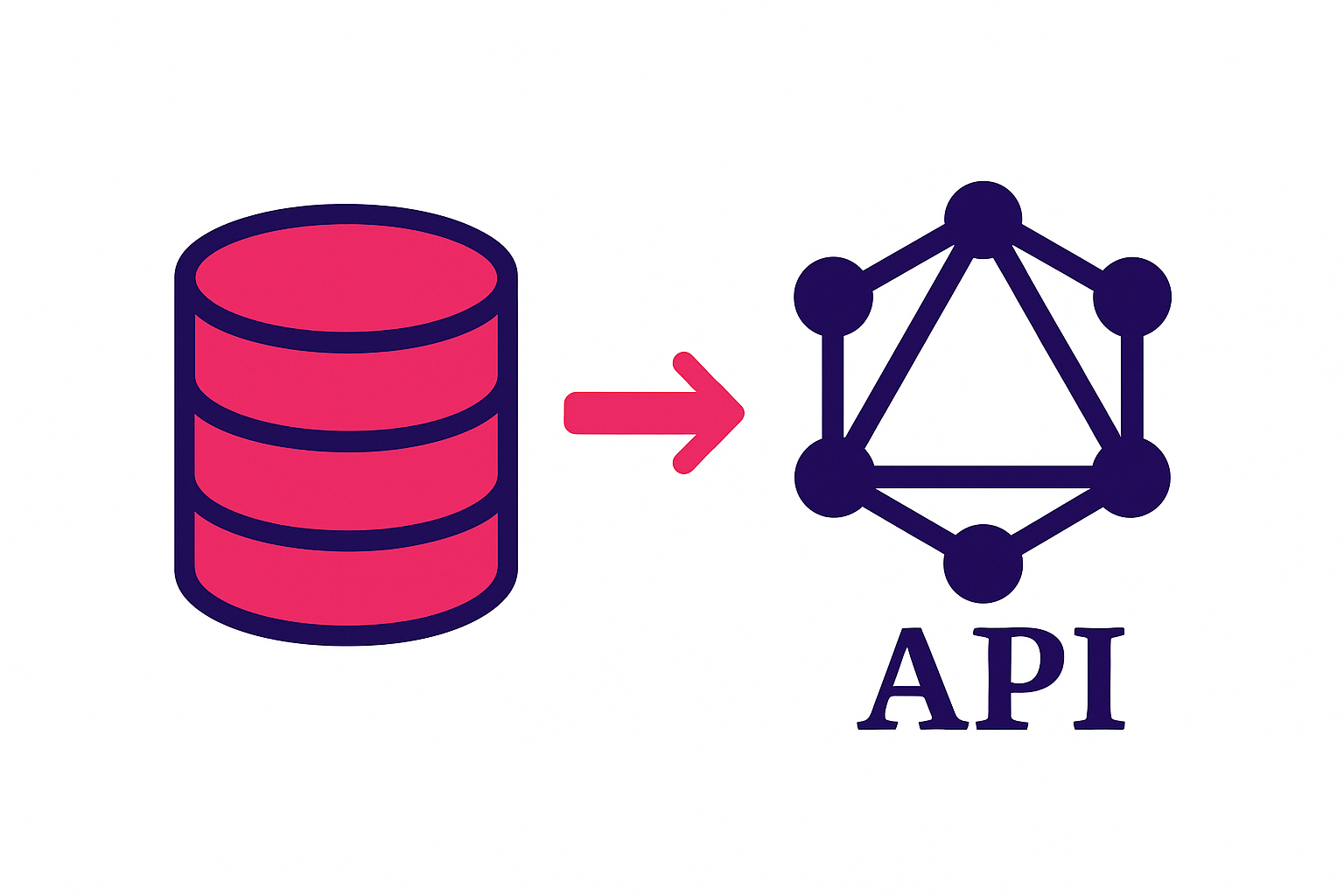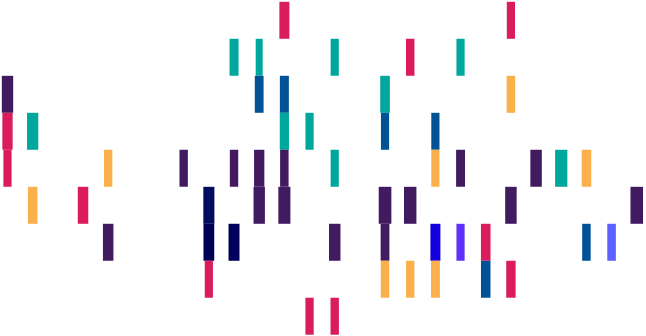
Why GraphQL? This is the API revolution your applications need.
REST APIs made sense in 2010. Today we're using AI-enabled applications.
The tech from 2010 just ain't cutting the mustard anymore.
Traditional REST APIs force you into rigid endpoint thinking:
/users/123/posts/456/comments.
Every piece of data requires a separate request, creating a spider web of API calls that slow down applications and complicate development. Your mobile app loads slowly because it makes seventeen API calls just to display a user profile. Your AI system can’t get the correlated data it needs without stitching together responses from dozens of endpoints.

GraphQL changes everything.
What Makes GraphQL Revolutionary?
Fetch Exactly What You Need
Instead of getting entire user objects when you only need names and email addresses, GraphQL lets you specify exactly which fields to return. No more over-fetching gigabytes of unnecessary data or under-fetching and making additional requests.
query {
users {
name
email
# Only these fields, nothing else
}
}
Get Related Data in One Request
Need user data, their posts, and comment counts? One GraphQL query handles what would require multiple REST API calls:
query {
user(id: "123") {
name
posts {
title
commentCount
tags {
name
}
}
}
}

Perfect for Modern Applications
GraphQL adapts to your client needs. Mobile apps get lightweight responses for battery efficiency. Web dashboards get rich data sets for comprehensive displays. AI systems get precisely correlated data for accurate predictions.
Evolve APIs Without Breaking Changes
Add new fields anytime without versioning nightmares. Deprecate old fields gracefully. Your API grows with your application needs instead of constraining them.
Why AI Applications Love GraphQL
Intelligent Data Fetching
AI systems need context—lots of it. GraphQL enables AI applications to gather comprehensive, related data in single requests rather than making hundreds of individual API calls to piece together the information needed for accurate predictions.
Traditional AI Data Gathering:
- 47 REST API calls to get user behavior data
- 23 additional calls for product information
- 15 more calls for historical patterns
- Total: 85 API calls taking 3.2 seconds
GraphQL AI Data Gathering:
- 1 GraphQL query with nested relationships
- All correlated data in single response
- Total: 1 API call taking 0.3 seconds
Contextual Intelligence Made For AI
Machine learning models perform better with related data. Period. Full stop. If that’s all you take away from this, that’s good enough. GraphQL’s ability to fetch connected information (users and their purchase history, products and their reviews, transactions and their patterns) gives AI systems the contextual awareness they need for intelligent recommendations and predictions.
Real-Time AI Responses
GraphQL subscriptions enable real-time data streaming perfect for AI applications that need to react to changing conditions instantly. Chat agents, fraud detection systems, and automated trading platforms can respond to events as they happen.
The SQL Database Reality
SQL Runs the World
95% of enterprise data lives in SQL databases. From Oracle systems running Fortune 500 companies to PostgreSQL powering startups, SQL databases store the world’s most critical information. Your customer data, financial records, inventory systems, user profiles — listen, everything is in SQL databases.
Multiple Databases, Multiple Problems
Modern organizations don’t use just one database:
- Customer data in Salesforce (which is just PostgreSQL, but with extra steps)
- Financial records in Oracle
- Product catalog in MySQL
- User analytics in Snowflake
- Legacy data in SQL Server
Getting a complete picture requires querying multiple systems is exactly what GraphQL excels at.
Federation Made Simple
GraphQL federation lets you create a single API that queries multiple databases simultaneously. Instead of building separate APIs for each database and then aggregating results in your application, GraphQL handles the orchestration automatically.
Why Devii + GraphQL = Game Changer
⚡ Instant API Generation
Building GraphQL APIs manually takes weeks. Devii does it in seconds.
Manual GraphQL Development:
- Write schema definitions for every table
- Create resolver functions for every field
- Handle database connections and queries
- Implement filtering, sorting, and pagination
- Add authentication and authorization
- Write tests and documentation
- Time Investment: 160+ hours per database
Devii Auto-Generation:
- Connect to your SQL database
- Devii auto-generates complete GraphQL schema
- Built-in resolvers, filtering, and pagination
- Enterprise security included
- Time Investment: 30 seconds per database
Automatic Schema Evolution
Your database changes. Your API should too.
Add a column to your users table? Devii detects the change and updates your GraphQL schema automatically. Remove a deprecated field? Devii handles the schema migration seamlessly. Your API stays in perfect sync with your database structure without manual intervention.
Add a column to your users table? Devii detects the change and updates your GraphQL schema automatically. Remove a deprecated field? Devii handles the schema migration seamlessly. Your API stays in perfect sync with your database structure without manual intervention.
Traditional Approach:
- Update database schema
- Manually update GraphQL schema
- Modify resolver functions
- Update tests and documentation
- Deploy changes carefully
- Hope nothing breaks
Devii Approach:
- Update database schema
- Devii handles everything else automatically
Enterprise Security Built-In
Manual GraphQL implementations often struggle with security. Query depth limits, rate limiting, field-level permissions—it’s complex to implement correctly. Devii includes enterprise-grade security from day one:
- Automatic query complexity analysis
- Field-level authorization
- Rate limiting and throttling
- SQL injection prevention
- Audit logging for compliance
Effortless Scaling
As your application grows from hundreds to millions of users, Devii scales your GraphQL APIs automatically. Connection pooling, query optimization, caching strategies—all handled without touching your code.
Real-World GraphQL Impact
Development Velocity
Teams using GraphQL ship features 3x faster because frontend developers can iterate independently of backend changes. Need a new field for your mobile app? Just add it to your GraphQL query—no backend deployment required.
Better User Experiences
GraphQL reduces mobile data usage by 40% on average by eliminating over-fetching. Users see faster load times, lower battery drain, and more responsive applications.
Simplified Architecture
Replace dozens of REST endpoints with a single GraphQL API. Reduce integration complexity, simplify testing, and make your application architecture more maintainable.
Lower Costs
Fewer API calls mean reduced server costs. Better caching means lower database load. Faster development means lower engineering costs. GraphQL optimization pays for itself.
Why Wait?
Every day you delay GraphQL adoption is another day of:
- Slow application performance
- Complex API integrations
- Over-engineered backend systems
- Frustrated frontend developers
- Higher infrastructure costs
With Devii, you can have production-ready GraphQL APIs running in minutes, not months.
Your databases are already there. Your applications need better APIs. Your users deserve faster experiences. Your developers want to ship features, not wrestle with API complexity.
GraphQL is the future of API development. Devii makes that future available today.
Hear what our clients say


Having Devii as my backend let's me focus on building the user experience of my application without having to worry about the backend.. because it just works and is managed by a couple of simple config files.
Jase Kraft
PaveWise

